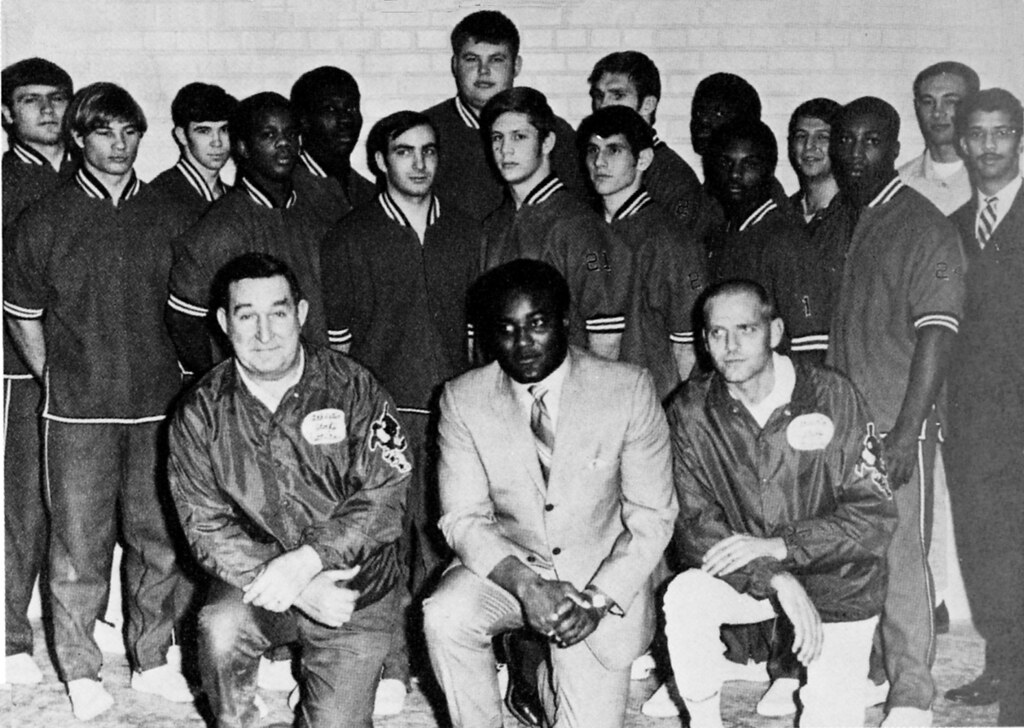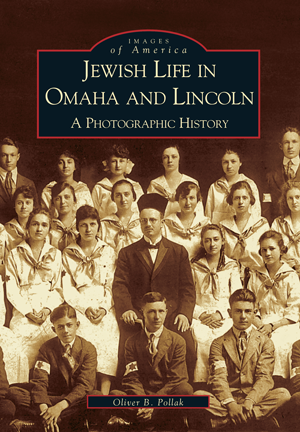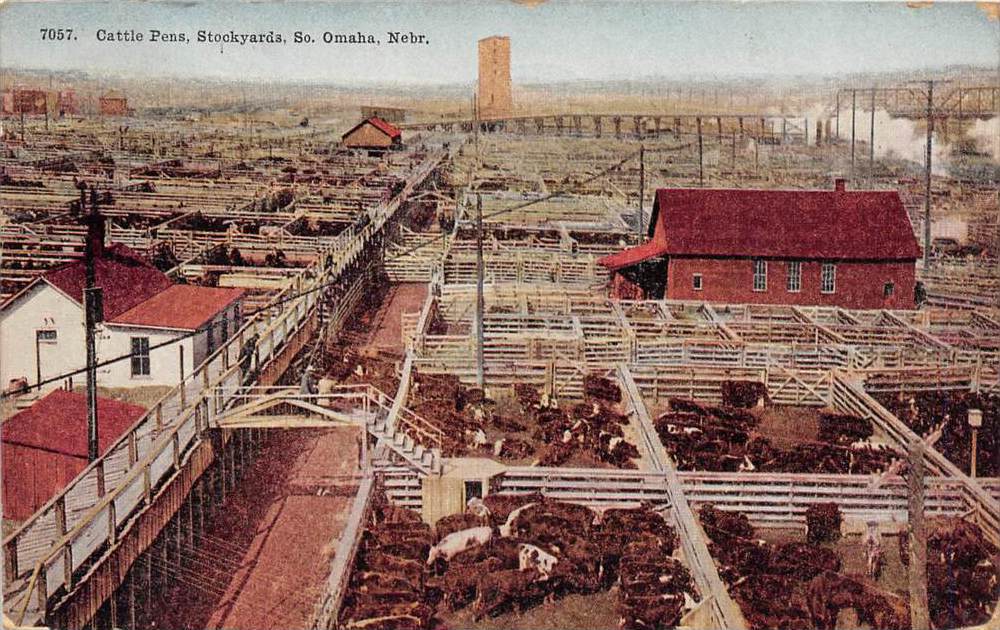Life Itself XII:
Omaha History Stories
Cathy Hughes proves you can come home again
https://leoadambiga.com/2018/06/28/cathy-hughes-pro…-come-home-again
Coming home is sweet for media giant Cathy Hughes
https://leoadambiga.com/2018/06/05/coming-home-is-s…ant-cathy-hughes
North Omaha rupture at center of PlayFest drama
https://leoadambiga.com/2018/04/30/north-omaha-rupt…f-playfest-drama/
John Knicely: A Broadcast Journalism Career Five Decades Strong
https://leoadambiga.com/2018/02/26/john-knicely-a-l…e-decades-strong/
Dundee Theater: Return engagement for the ages
https://leoadambiga.com/2017/10/28/dundee-theater-r…ent-for-the-ages

The Urban League movement lives strong in Omaha
https://leoadambiga.com/2017/11/17/the-urban-league…-strong-in-omaha/
Native Omaha Days: A Homecoming Like No Other
https://leoadambiga.com/2017/08/11/native-omaha-day…ng-like-no-other
Brenda Council: A public servant’s life
https://leoadambiga.com/2017/06/26/brenda-council-a…ic-servants-life
South Omaha Museum: A melting pot magic city gets its own museum
https://leoadambiga.com/2017/04/13/a-melting-pot-ma…s-its-own-museum
Mural project celebrates mosaic of South Omaha culture
https://leoadambiga.com/2016/07/19/mural-project-ce…th-omaha-culture/

One Hundred Years Strong: Bryant-Fisher Family Reunion
https://leoadambiga.com/2017/06/23/100-years-strong
Baseball and Soul Food at Omaha Rockets Kanteen
https://leoadambiga.com/2017/06/23/baseball-and-soul-food/
In their own words – The Greatest Generation on World War II
https://leoadambiga.com/2017/05/02/in-their-own-wor…-on-world-war-ii/
The tail-gunner’s grandson: Ben Drickey revisits World War II experiences on foot and film
https://leoadambiga.com/2017/05/02/the-tail-gunners…on-foot-and-film
Love affair with Afghanistan and international studies affords Tom Gouttierre world view like few others
https://leoadambiga.com/2017/02/21/love-affair-with…-like-few-others/
Father Ken Vavrina: Crossing Bridges
https://leoadambiga.com/2015/10/29/father-ken-vavri…e-serving-others/
Omaha Children’s Museum all grown up at 40: Celebrating four decades of letting children’s imagination run free
https://leoadambiga.com/2016/05/07/omaha-childrens-…ination-run-free/
Eighty years and counting:
History in the making at the Durham Museum
https://leoadambiga.com/2011/08/31/eighty-years-and…he-durham-museum
Durham Museum to celebrate 40-and-40: Forty years as train station and four decades as museum
https://leoadambiga.com/2015/03/04/durham-museum-to…ecades-as-museum

“Nebraska Methodist College at 125: Scaling New Heights”
https://leoadambiga.com/2016/09/15/nebraska-methodi…ling-new-heights
Omaha history salvager Frank Horejsi:
Dream calls for warehouse to become a museum
https://leoadambiga.com/2015/03/11/omaha-history-sa…-become-a-museum
North’s Star: Gene Haynes builds legacy as education leader with Omaha Public Schools and North High School
https://leoadambiga.com/2014/12/02/norths-star-gene…orth-high-school/
Alone or together, Omaha power couple Vic Gutman and Roberta Wilhelm give back to the community
https://leoadambiga.com/2014/09/29/alone-or-togethe…to-the-community
Creative couple: Bob and Connie Spittler and their shared creative life 60 years in the making
https://leoadambiga.com/2015/12/23/bob-and-connie-s…rs-in-the-making/
David Corbin and Josie Metal-Corbin: Moving Right Along
https://leoadambiga.com/2015/07/03/moving-right-alo…wn-in-retirement/
Ben and Freddie Gray: North Omaha Power Couple
https://leoadambiga.com/2012/07/13/gray-matters-ben…hways-to-success/
Omaha’s old lion of philanthropy Dick Holland slowing down but still roaring and challenging the status quo
https://leoadambiga.com/2015/12/04/omahas-old-lion-…g-the-status-quo

Crime and punishment questions still surround 1970 killing that sent Omaha Two to life in prison
https://leoadambiga.com/2016/03/30/crime-and-punish…o-life-in-prison/
North Omaha: Voices and Visions for Change
https://leoadambiga.com/2016/02/29/north-omaha-voic…sions-for-change
Two Part Series:
After Decades of Walking Behind to Freedom, Omaha’s African-American Community Tries Picking Up the Pace Through Self-Empowered Networking
https://leoadambiga.com/2016/02/13/two-part-series-…wered-networking
Mike Green and Dick Davis: Lifetime Friends, Former Backfield Mates, Now Entrepreneurs
https://leoadambiga.com/2011/08/20/lifetime-friends…-black-citizenry/
Two families suffer Omaha’s segregation and waken the conscience of a nation
https://leoadambiga.com/2015/11/09/my-newest-cover-…ence-of-a-nation/
When New Horizons Dawned for African-Americans Seeking Homes in Omaha
https://leoadambiga.com/2013/01/17/when-new-horizon…ericans-in-omaha
South Omaha stories on tap for free PlayFest show; Great Plains Theatre Conference’s Neighborhood Tapestries returns to south side
https://leoadambiga.com/2015/05/06/south-omaha-stor…o-the-south-side/

Celebrating 90 years, the Omaha Community Playhouse takes seriously its community theater mission
https://leoadambiga.com/2015/05/03/omaha-community-…-theater-mission
Playwright turned history detective Max Sparber turns identity search inward
https://leoadambiga.com/2015/02/07/playwright-turne…ty-search-inward
Jim Trebbien: Lifelong love affair with food led to distinguished culinary arts education career at Metropolitan Community College
https://leoadambiga.com/2015/03/02/culinary-artist-…ommunity-college
The Artist in the Mill: Linda Meigs brings agriculture, history and art together at Florence Mill
https://leoadambiga.com/2014/08/01/linda-meigs-brin…at-florence-mill

Patrick Drickey: Golf Shots
https://leoadambiga.com/2010/08/05/golf-shots-pat-d…eat-golf-courses/
Nancy Kirk: Fabric and Faith
https://leoadambiga.com/2011/10/21/nancy-kirk-arts-…erfaith-champion/
Edith Buis: A Life Immersed in Art
https://leoadambiga.com/2012/06/11/eddith-buis-a-life-immersed-in-art
Life comes full circle for singer Carol Rogers
https://leoadambiga.com/2015/08/28/life-comes-full-…ger-carol-rogers
Goin’ down the Lincoln Highway with Omaha music guru Nils Anders Erickson
https://leoadambiga.com/2013/10/01/goin-down-the-li…-anders-erickson

Omaha’s Old Market:
History, stories, places, personalities, characters
https://leoadambiga.com/2016/06/19/omahas-old-marke…ities-characters/
The X-Men Weigh-In on Designing a New Omaha
https://leoadambiga.com/2010/08/25/the-x-men-weigh-…ning-a-new-omaha
Designing Woman: Connie Spellman Helps Shape a New Omaha Through Omaha By Design
https://leoadambiga.com/2011/12/13/designing-woman-…-omaha-by-design
Play considers Northside black history through eyes of Omaha Star publisher Mildred Bown
https://leoadambiga.com/2016/04/29/play-considers-n…-of-mildred-bown
Mike Saklar: Whatsoever You Do to the Least of My Brothers
https://leoadambiga.com/2010/08/01/whatsoever-you-d…t-you-do-unto-me/
Teela Mickles: Nurturing One Lost Soul at a Time
https://leoadambiga.com/2012/06/29/nurturing-one-lo…-back-to-society/

Kent Bellows: Soul in Motion
https://leoadambiga.com/2010/09/21/kent-bellows-soul-in-motion/
Kent Bellows legacy lives on
https://leoadambiga.com/2010/10/13/bellows-legacy-lives-on
Young artist steps out of the shadows of towering presence in his life
https://leoadambiga.com/2011/09/03/a-young-artist-s…ence-in-his-life
Exhibit by photographer Jim Krantz and his artist grandfather, the late David Bialac engages in art conversation through the generations
https://leoadambiga.com/2011/10/28/photographer-jim…-the-generations/
Book explores University of Nebraska at Omaha’s rich history
https://leoadambiga.com/2012/08/02/book-explores-un…has-rich-history/
A brief history of Omaha’s civil rights struggle distilled in black and white by photographer Rudy Smith
https://leoadambiga.com/2012/05/02/a-brief-history-…apher-rudy-smit
Rich music history long untold revealed and celebrated by Omaha Black Music Hall of Fame
https://leoadambiga.com/2011/07/02/a-rich-music-his…sic-hall-of-fame/
The History Man, Gary Kastrick, and his Project OMAHA lose home base
https://leoadambiga.com/2010/10/03/gary-kastricks-p…es-its-home-base
Omahans recall historic 1963 march on Washington
https://leoadambiga.com/2013/08/12/omahans-recall-h…ch-on-washington
Great Migration Stories: For African Americans who left the South for Omaha, the specter of down home is never far away
https://leoadambiga.com/2013/07/30/great-migration-…s-never-far-away
THE GREAT MIGRATION: WHEREVER PEOPLE MOVE, HOME IS WHERE THE HEART IS
https://leoadambiga.com/2015/05/07/the-great-migrat…ere-the-heart-is
CIVIL RIGHTS: STANDING UP FOR WHAT’S RIGHT TO MAKE A DIFFERENCE
https://leoadambiga.com/2015/05/07/civil-rights-sta…ake-a-difference/

The Omaha Star celebrates 75 years of black woman legacy
https://leoadambiga.com/2013/04/11/the-omaha-star-c…ack-woman-legacy
Marguerita Washington:
The woman behind the Star that never sets
https://leoadambiga.com/2010/08/02/marguerita-washi…-that-never-sets
Omaha World-Herald columnist Mike Kelly:
A storyteller for all seasons
https://leoadambiga.com/2014/04/02/omaha-world-hera…-for-all-seasons
Bob Hoig’s unintended entree into journalism leads to career six decades strong
https://leoadambiga.com/2013/01/25/bob-hoigs-uninte…cades-strong-now
Omaha Fashion Past
https://leoadambiga.com/2012/02/04/omaha-fashion-past
Theater-Fashion Maven Elaine Jabenis
https://leoadambiga.com/2010/08/04/theater-fashion-…n-elaine-jabenis
Timeless Fashion Illustrator Mary Mitchell: Her Work Illustrating Three Decades of Style Now Subject of New Book and Exhibition
https://leoadambiga.com/2012/01/07/timeless-fashion…k-and-exhibition

From the Archives: Warren Francke – A passion for journalism, teaching and life
https://leoadambiga.com/2012/06/11/from-the-archive…eaching-and-life/
Documentary considers Omaha’s changing face since World War II
https://leoadambiga.com/2012/08/15/documentary-cons…nce-world-war-ii/
Omaha Community Foundation project assesses the Omaha landscape with the goal of affecting needed change
https://leoadambiga.com/2017/05/10/omaha-community-…ng-needed-change/
Omaha Community Foundation:
A Giving Connection Serving Those Who Serve
https://leoadambiga.com/2013/09/30/omaha-community-…-those-who-serve
Everything old newly restored again at historic Sacred Heart Catholic Church in Omaha
https://leoadambiga.com/2012/07/15/everything-old-i…-church-in-omaha

Remembering Omaha Old Market original, fruit and vegetable peddler Joe Vitale
https://leoadambiga.com/2012/06/19/in-memory-of-a-o…ddler-joe-vitale
From the Archives: Ode to the Omaha Stockyards
https://leoadambiga.com/2012/06/14/from-the-archive…omaha-stockyards
Last days and halcyon times of the Omaha Stockyards remembered
https://leoadambiga.com/2010/08/02/the-last-days-an…yards-remembered/
“Memories of the Jewish Midwest: Mom and Pop Grocery Stores, Omaha, Lincoln, Greater Nebraska and Southwest Iowa”
https://leoadambiga.com/2011/12/12/memories-of-the-…southwest-iowa-2/



Retired Omaha World-Herald military affairs newsman Howard Silber: War veteran, reporter, raconteur, bon vi vant, globetrotter
https://leoadambiga.com/2011/10/06/retired-omaha-wo…nt-globe-trotter
From the Archives: Former Omaha television photojournalist Don Chapman’s adventures in imagemaking keep him on the move
https://leoadambiga.com/2011/09/29/from-the-archive…-him-on-the-move
Omaha’s KVNO 90.7 FM turns 40: Commercial-free public radio station serves the community all classical music and local news
https://leoadambiga.com/2012/02/11/omahas-kvno-90-7…ent-set-it-apart
Nancy Bounds, Timeless Arbiter of Fashion Beauty, Glamour, Poise
http://leoadambiga.com/2012/02/04/nancy-bounds-a-t…ty-glamour-poise
Charles Jones: Looking Homeward
https://leoadambiga.com/2010/08/03/looking-homeward/
Back in the Day:
Native Omaha Days is reunion, homecoming, heritage celebration and party all in one
https://leoadambiga.com/2011/06/11/back-in-the-day-…party-all-in-one
Native Omaha Days: A Black is Beautiful celebration, now, and all the days gone by
https://leoadambiga.com/2011/07/04/native-omaha-day…the-days-gone-by
The Ties that Bind:
One family’s celebration of Native Omaha Days
https://leoadambiga.com/2011/06/11/the-ties-that-bi…ative-omaha-days

photo by Cyclops-Optic (Jack David Hubbell)
My Brother’s Keeper, The competitive drive MLB Hall of Fame pitcher Bob Gibson’s older brother, Josh, instilled in him (from my Omaha Black Sports Legends series, Out to Win: The Roots of Greatness)
https://leoadambiga.com/2010/04/30/my-brothers-keep…instilled-in-him
Luigi’s Legacy, The Late Omaha Jazz Artist Luigi Waites Fondly Remembered
https://leoadambiga.com/2011/07/18/luigis-legacy-th…ondly-remembered/
Carole Woods Harris Makes a Habit of Breaking Barriers for Black Women in Business and Politics
https://leoadambiga.com/2012/04/17/carole-woods-har…ess-and-politics
By land, by sea, by air, Omaha Jewish veterans performed far-flung wartime duties
https://leoadambiga.com/2011/05/22/by-land-by-sea-b…g-wartime-duties
Omaha’s Tuskegee Airmen
https://leoadambiga.com/2010/06/18/the-tuskegee-airmen
Donovan Ketzler: Last of the Rough Riders
https://leoadambiga.com/2010/06/18/last-of-the-rough-riders/

Warren Buffett, left, and Stan Lipsey at the Omaha Sun in the 1970s.
An Omaha legacy ends, Wesley House Community Center shutters after 139 years — New use for site unknown
https://leoadambiga.com/2011/05/21/an-omaha-legacy-…for-site-unknown
Sun reflection: Revisiting the Omaha Sun’s Pulitzer Prize-winning expose of Boys Town
https://leoadambiga.com/2011/04/28/sun-reflection-r…ose-on-boys-town/
Burden of Dreams:
The trials of Omaha’s Black Museum
https://leoadambiga.com/2010/12/14/burden-of-dreams…a’s-black-museum
Long and winding saga of Great Plains Black History Museum takes new turn
https://leoadambiga.com/2010/12/14/long-and-winding…kes-a-new-turn-2/
Coloring History:
A long, hard road for UNO Black Studies
https://leoadambiga.com/2010/08/25/coloring-history…no-black-studies

Omaha’s Monty Ross talks about making history with Spike Lee
https://leoadambiga.com/2010/09/06/monty-ross-talks…-with-since-1981/
Radio One queen Cathy Hughes rules by keeping it real: Native Omahan created Urban Radio format
https://leoadambiga.com/2010/04/29/radio-one-queen-…-keeping-it-real/
Show goes on at Omaha Community Playhouse, where Henry Fonda and Dorothy McGuire got their start
https://leoadambiga.com/2010/08/04/the-show-goes-on
Omaha’s Grand Old Lady, The Orpheum Theater
https://leoadambiga.com/2010/08/02/omahas-grand-old…-orpheum-theater
Magical mystery tour of Omaha’s Magic Theatre, a Megan Terry and Jo Ann Schmidman production
https://leoadambiga.com/2010/05/19/the-magical-myst…idman-production
Nancy Duncan: Her final story
https://leoadambiga.com/2010/05/09/her-final-story
From the Archives: Nancy Duncan’s journey to storytelling took circuitous route
https://leoadambiga.com/2012/04/01/from-the-archive…circutious-route
Bertha’s Battle: Bertha Calloway, the Grand Lady of Lake Street, struggles to keep the Great Plains Black History Museum afloat
https://leoadambiga.com/2010/05/11/berthas-battle

Requiem for a Heavyweight, the Ron Stander Story
https://leoadambiga.com/2010/05/31/requiem-for-a-heavyweight
This version of Simon Says positions Omaha Steaks as food service juggernaut
https://leoadambiga.com/2010/06/15/this-version-of-…rvice-juggernaut
Bedrock values at core of four-generation All Makes Office Furniture Company
https://leoadambiga.com/2012/06/17/bedrock-values-a…urniture-company/
Customer-first philosophy makes family-owned Kohll’s Pharmacy and Homecare stand out from the crowd
https://leoadambiga.com/2012/06/18/customer-first-p…t-from-the-crowd
Altman on Altman: A look at the late American auteur Robert Altman through the eyes of his grandson, indie Omaha filmmaker Dana Altman, and other cinephiles
https://leoadambiga.com/2010/05/18/altman-on-altman
A Contrary Path to Social Justice: The De Porres Club and the fight for equality in Omaha
https://leoadambiga.com/2010/05/01/a-contrary-path-…quality-in-omaha

University of Nebraska at Omaha Wrestling dynasty built on tide of social change
https://leoadambiga.com/2010/04/30/uno-wrestling-dy…of-social-change
Academy Award-nominated documentary “A Time for Burning” captured church and community struggle with racism
https://leoadambiga.com/2010/12/15/a-time-for-burni…ggle-with-racism
When Omaha’s North 24th Street brought together Jews and Blacks in a melting pot marketplace
https://leoadambiga.com/2010/04/30/when-omahas-nort…-that-is-no-more
Filmmaker Alexander Payne and his father George remember the family’s Virginia Cafe
https://leoadambiga.com/2018/04/01/filmmaker-alexan…ys-virginia-cafe/

Billy Melton served with Omaha’s “Sweet Sixteen” in the all black 530th Quartermaster Battalion
https://leoadambiga.com/2010/04/30/omahas-sweet-six…master-battalion
In her 101 years, ex-vaudeville dancer Maude Wangberg has lived a whirl of splendor
https://leoadambiga.com/2010/08/02/in-her-101-years…hirl-of-splendor/
The Brandeis Story:
Great Plains family-owned department store empire
https://leoadambiga.com/2010/06/07/the-brandeis-sto…the-great-plains
In Memoriam: George Eisenberg
https://leoadambiga.com/2018/03/27/in-memoriam-george-eisenberg






Charles Hall’s Fair Deal Cafe
https://leoadambiga.com/2016/05/11/charles-halls-fair-deal-cafe
Deadeye Marcus “Mac” McGee still a straight shooter at 100
https://leoadambiga.com/2016/03/15/deadeye-marcus-m…t-shooter-at-100
The series and the stadium: CWS and Rosenblatt are home to the Boys of Summer
https://leoadambiga.com/2016/06/25/the-series-and-t…e-boys-of-summer/
A Rosenblatt Tribute
https://leoadambiga.com/2010/06/19/a-rosenblatt-tribute
El Puente: Attempting to bridge divide between grassroots community and the system
https://leoadambiga.com/2012/07/22/el-puente-attemp…y-and-the-system/
Rabbi Azriel: Legacy as social progressive and interfaith champion secure
https://leoadambiga.com/2014/05/15/rabbi-azriel-leg…-champion-secure
Nebraska’s Changing Face; UNO’s Changing Face
https://leoadambiga.com/2014/03/18/nebraskas-changi…os-changing-face
Good Shepherds of North Omaha:
Ministers and Churches Making a Difference in Area of Great Need
https://leoadambiga.com/2011/07/04/the-shepherds-of…ea-of-great-need
©Omaha World-Herald
When Rosenblatt was Municipal Stadium. At the first game, from left: Steve Rosenblatt; Rex Barney; Bob Hall, owner of the Omaha Cardinals; Duce Belford, Brooklyn Dodgers scout and Creighton athletic director; Richie Ashburn, a native of Tilden, Neb.; Johnny Rosenblatt; and Johnny Hopp of Hastings, Neb.
Art imitates life for “Having Our Say” stars, sisters
Camille Metoyer Moten and Lanette Metoyer Moore, and their brother Ray Metoyer
https://leoadambiga.com/2014/02/05/art-imitates-lif…ther-ray-metoyer
Brenda Allen’s real life ccuntry music drama took her from Nebraska to Vietnam to Vegas
https://leoadambiga.com/2013/06/01/brenda-allens-re…vietnam-to-vegas
Ex-reporter Eileen Wirth pens book on Nebraska women in journalism and their leap from society page to front page
https://leoadambiga.com/2013/03/22/ex-reporter-eile…ge-to-front-page
Documentary shines light on civil rights powerbroker Whitney Young: Producer Bonnie Boswell to discuss film and Young
https://leoadambiga.com/2013/03/21/documentary-shin…e-film-and-young/
Free Radical Ernie Chambers subject of new biography by author Tekla Agbala Ali Johnson
https://leoadambiga.com/2012/12/05/free-radical-ern…bala-ali-johnson
Creighton College of Business anchored in pioneering entrepreneurial spirit and Jesuit philosophy
https://leoadambiga.com/2012/08/19/creighton-colleg…esuit-philosophy
Gender equity in sports has come a long way, baby; Title IX activists-advocates who fought for change see much progress and the need for more
https://leoadambiga.com/2012/06/11/gender-equity-in…he-need-for-more/
One Helluva Broad: Mary Galligan Cornett
https://leoadambiga.com/2012/06/09/one-helluva-broa…galligan-cornett
When a building isn’t just a building:
LaFern Willams South YMCA facelift reinvigorates community
https://leoadambiga.com/2012/08/03/when-a-building-…-just-a-buildin

Carolina Quezada leading rebound of Latino Center of the Midlands
https://leoadambiga.com/2012/05/03/carolina-quezada…-of-the-midlands
Allan Noddle’s food industry adventures show him the world
https://leoadambiga.com/2012/04/28/allan-noddles-ad…ow-him-the-world
Devotees hold fast to the Latin rite
https://leoadambiga.com/2010/06/15/devotees-hold-fa…o-the-latin-rite/
Steve Rosenblatt: A legacy of community service, political ambition and baseball adoration
https://leoadambiga.com/2012/04/27/steve-rosenblatt…seball-adoration
From the Archives:
Peony Park not just an amusement playground, but a multi-use events facility
https://leoadambiga.com/2012/04/08/from-the-archive…-events-facility

Making the case for a Nebraska Black Sports Hall of Fame
https://leoadambiga.com/2012/03/27/making-the-case-…rts-hall-of-fame
El Museo Latino opened as Midwest’s first Latino art and history museum-cultural center
https://leoadambiga.com/2011/06/14/el-museo-latino-…r-in-the-midwest/
The Garcia Girls
https://leoadambiga.com/2012/08/06/the-garcia-girls
South Omaha’s Jim Ramirez: A Man of the People
https://leoadambiga.com/2010/08/01/jim-ramirez-a-man-of-the-people
Community-builders Jose and Linda Garcia Devote Themselves to a Life Promoting Latino Art, Culture, History
https://leoadambiga.com/2012/09/30/community-builde…-culture-history/
Jose and Linda Garcia find new outlet for their magnificent obsession in the Mexican American Historical Society of the Midlands
https://leoadambiga.com/2012/03/25/jose-and-linda-g…-of-the-midlands/

Parween Arghandaywal pronounces words during English class at the University of Nebraska Omaha for visiting Afghan teachers in 2002. (©Omaha World-Herald Photo by Bill Batson)

Afghan women arrived in Omaha under the sponsorship of the University of Nebraska at Omaha. Saleemah, a teacher from Kabul and wearing a scarf is hugged by Masuma Basheer, an employee of America West Airlines in Omaha and a formerly from Afghanistan. (©Omaha World-Herald photo by Bill Batson)

Tom Gouttierre conferring UNO honorary status on Hamid Karzai during the then-Afghan president’s visit to Omaha
UNO Center for Afghanistan Studies plays role in multi-national efforts to restore Afghan educational system
https://leoadambiga.com/2011/12/25/uno-center-for-a…ucational-system
UNO Afghanistan Teacher Education Project trains women educators from the embattled nation
https://leoadambiga.com/2011/12/20/uno-afghanistan-…embattled-nation/
The enchanted life of Florence Taminosian Young, daughter of a whirling dervish
https://leoadambiga.com/2011/12/10/the-enchanted-li…whirling-dervish
Louise Abrahamson’s legacy of giving finds perfect fit at The Clothesline, the Boys Town thrift store the octogenarian founded and still runs
https://leoadambiga.com/2011/12/05/louise-abrahamso…uns-at-boys-town
Shirley Goldstein: Cream of the Crop – one woman’s remarkable journey in the Free Soviet Jewry movement
https://leoadambiga.com/2011/09/05/shirley-goldstei…t-jewry-movement
An Open Invitation: Rev. Tom Fangman Engages All Who Seek or Need at Sacred Heart Catholic Church
https://leoadambiga.com/2011/01/09/an-open-invitati…-catholic-church
The Sweet Sounds of Sacred Heart’s Freedom Choir
https://leoadambiga.com/2015/03/10/the-sweet-sounds…ts-freedom-choir
Salem’s Voices of Victory Gospel Choir Gets Justified with the Lord
https://leoadambiga.com/2010/06/07/salems-voices-of…ed-with-the-lord

After steep decline, the Wesley House rises under Paul Bryant to become youth academy of excellence in the inner city
https://leoadambiga.com/2011/08/27/after-a-steep-de…n-the-inner-city
Song girl Ann Ronell
https://leoadambiga.com/2011/08/19/song-girl-ann-ronell/
A Family Thing: Bryant-Fisher Family Reunion
https://leoadambiga.com/2011/08/04/a-family-thing-b…r-family-reunion
Rev. Everett Reynolds Gave Voice to the Voiceless
https://leoadambiga.com/2011/07/18/rev-everett-reyn…to-the-voiceless
From the Archives: Minister makes no concession to retirement, plans busy travel, filmmaking schedule
https://leoadambiga.com/2012/04/01/from-the-archive…mmaking-schedule
From the Archives: Golden Boy Dick Mueller of Omaha leads Firehouse Theatre revival
https://leoadambiga.com/2011/09/23/from-the-archive…-theatre-revival/
Requiem for a Dynasty: UNO Wrestling
https://leoadambiga.com/2011/07/28/requiem-for-a-dy…ville-university/
UNO wrestling dynasty built on tide of social change
https://leoadambiga.com/2011/03/17/uno-wrestling-dy…-social-change-2/

Magazine and mission founded on spirit of giving: Metro Magazine publisher Andy Hoig celebrates philanthropy
https://leoadambiga.com/2011/03/06/a-magazine-and-a…tes-philanthropy/
Lucile’s Old Market, Mother Hubbard magnificent obsession: From one eccentric to another – Mary Thompson on her late mother Lucile Schaaf
https://leoadambiga.com/2010/11/28/luciles-old-market/
Finding Forefathers: Lincoln Motion Picture Company Film Festival gives nod to past and offers glimpse of future
https://leoadambiga.com/2010/11/20/finding-forefath…limpse-of-future
Freedom riders: A get on the bus inauguration diary
https://leoadambiga.com/2010/10/21/get-on-the-bus-a…-ride-to-freedom
Joan Micklin Silver: Maverick filmmaker helped shape American independent film scene and opened doors for women directors
https://leoadambiga.com/2010/10/10/joan-micklin-sil…-women-directors
Joan Micklin Silver: Shattering cinema’s glass ceiling
https://leoadambiga.com/2010/05/18/shattering-cinemas-glass-ceiling
Sam Cooper’s freedom road
https://leoadambiga.com/2010/09/07/sam-cooper’s-freedom-road/
Man on fire: Activist Ben Gray’s flame burns bright
https://leoadambiga.com/2010/09/02/ben-gray-man-on-fire
Two blended houses of worship desegregate Sunday: Episcopal Church of the Resurrection and New Life Presbyterian are houses undivided
https://leoadambiga.com/2010/08/30/two-blended-hous…houses-unidvided
Hidden In plain view: Rudy Smith’s camera and memory fix on critical time in struggle for equality
https://leoadambiga.com/2010/08/29/hidden-in-plain-…gle-for-equality/
Isabella Threlkeld’s lifetime pursuit of art and ideas yields an uncommon life
https://leoadambiga.com/2010/08/04/isabella-threlke…an-uncommon-life/
Men of Science
https://leoadambiga.com/2010/08/02/men-of-science/
Blacks of Distinction
https://leoadambiga.com/2016/02/18/blacks-of-distinction-2
The Myers Legacy of Caring and Community
https://leoadambiga.com/2010/07/11/the-myers-legacy…ng-and-community
Cool Cat Billy and the Sportin’ Life
https://leoadambiga.com/2010/07/01/sportin-life
Art Missionaries, Bob and Roberta Rogers and their Gallery 72
https://leoadambiga.com/2010/06/19/art-missionaries
Get your jitney on: August Wilson play “Jitney” at the John Beasley Theater resonates with cast and crew
https://leoadambiga.com/2010/06/18/get-your-jitney-on
Puttin’ On the Ritz: Billy Melton and the crew Rrcall the Ritz Cab Co.
https://leoadambiga.com/2010/06/18/puttin-on-the-ritz
A force of nature named Evie:
Still a maverick social justice advocate at 100
https://leoadambiga.com/2010/06/16/a-force-of-natur…e-advocate-at-99
The Storz Brewery
The building at 1807 N. 16th St., which housed the operation until it closed in 1972. It included a hospitality room patterned after a brew house called “The Frontier Room” and a hunting lodge-style room adorned with the stuffed heads of big game called “The Trophy Room.”
THE WORLD-HERALD

The Storz Saga: A Family Dynasty – Their Mansion, the Brewery that Built It, the Man Who Loved It, a Legacy of Giving, the Loss of a Dream
https://leoadambiga.com/2010/06/15/the-storz-saga-a…-loss-of-a-dream
The Magnificent Obsession of Art Storz Jr., the Old Man and the Mansion
https://leoadambiga.com/2010/06/15/the-magnificent-…-and-the-mansion
Gospel playwright Llana Smith enjoys her Big Mama’s time
https://leoadambiga.com/2010/06/07/gospel-playwrigh…r-big-mamas-time
Doug Marr, Diner Theater and keeping the faith
https://leoadambiga.com/2010/06/06/doug-marr-keeping-the-faith
When We Were Kings: A Vintage Pro Wrestling Story
https://leoadambiga.com/2010/06/04/when-we-were-kin…-wrestling-story
RIP Preston Love Sr., 1921-2004. He Played at Everything
https://leoadambiga.com/2010/06/03/preston-love-192…ed-at-everything/
Preston Love: His voice will not be stilled
https://leoadambiga.com/2010/06/03/preston-love-his…l-not-be-stilled
The Smooth Jazz Stylings of Mr. Saturday Night, Preston Love Sr.
https://leoadambiga.com/2010/06/03/mr-saturday-night/
North Omaha champion Frank Brown fights the good fight
https://leoadambiga.com/2012/01/15/north-omaha-cham…s-the-good-fight
John and Pegge Hlavacek’s globe-trotting adventures as foreign correspondents
https://leoadambiga.com/2010/06/02/john-and-pegge-h…n-correspondents

When Boys Town became the center of the film world
https://leoadambiga.com/2010/05/31/when-boys-town-b…f-the-film-world/
Flanagan-Monsky example of social justice and interfaith harmony still shows the way seven decades later
https://leoadambiga.com/2010/05/31/flanagan-monsky-…y-60-years-later
Rich Boys Town sports legacy recalled
https://leoadambiga.com/2010/05/31/rich-boys-town-s…-legacy-recalled/
Winners Circle: Couple’s journey of self-discovery ends up helping thousands of at-risk kids through early intervention educational program
https://leoadambiga.com/2010/05/31/couples-journey-…-of-at-risk-kids
Otis Twelve’s Radio Days
https://leoadambiga.com/2010/05/31/otis-twelves-radio-days/
Thomas Gouttierre: In Search of a Lost Dream, An American’s Afghan Odyssey
https://leoadambiga.com/2010/05/19/in-search-of-a-l…s-afghan-odyssey
Goodwin’s Spencer Street Barber Shop:
We Cut Heads and Broaden Minds, Too
https://leoadambiga.com/2010/04/29/goodwins-spencer…roaden-minds-too/
Now Wasn’t That a Time? Helen Jones Woods and the International Sweethearts of Rhythm
https://leoadambiga.com/2010/04/29/17
Black Women in Music
https://leoadambiga.com/2010/07/11/black-women-in-music
Share this: Leo Adam Biga's Blog














































































